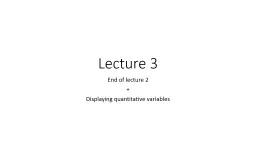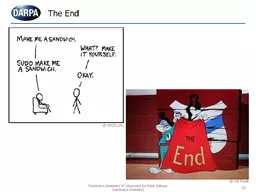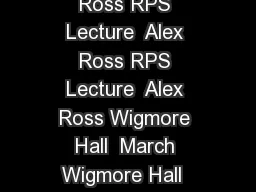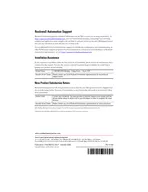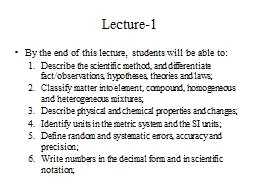PPT-Lecture 3 End of lecture 2
Author : yoshiko-marsland | Published Date : 2019-12-21
Lecture 3 End of lecture 2 Displaying quantitative variables First Class Second Class Third Class Crew Total Alive 203 118 178 212 711 Dead 122 167 528 673 1490
Presentation Embed Code
Download Presentation
Download Presentation The PPT/PDF document "Lecture 3 End of lecture 2" is the property of its rightful owner. Permission is granted to download and print the materials on this website for personal, non-commercial use only, and to display it on your personal computer provided you do not modify the materials and that you retain all copyright notices contained in the materials. By downloading content from our website, you accept the terms of this agreement.
Lecture 3 End of lecture 2: Transcript
Download Rules Of Document
"Lecture 3 End of lecture 2"The content belongs to its owner. You may download and print it for personal use, without modification, and keep all copyright notices. By downloading, you agree to these terms.
Related Documents

